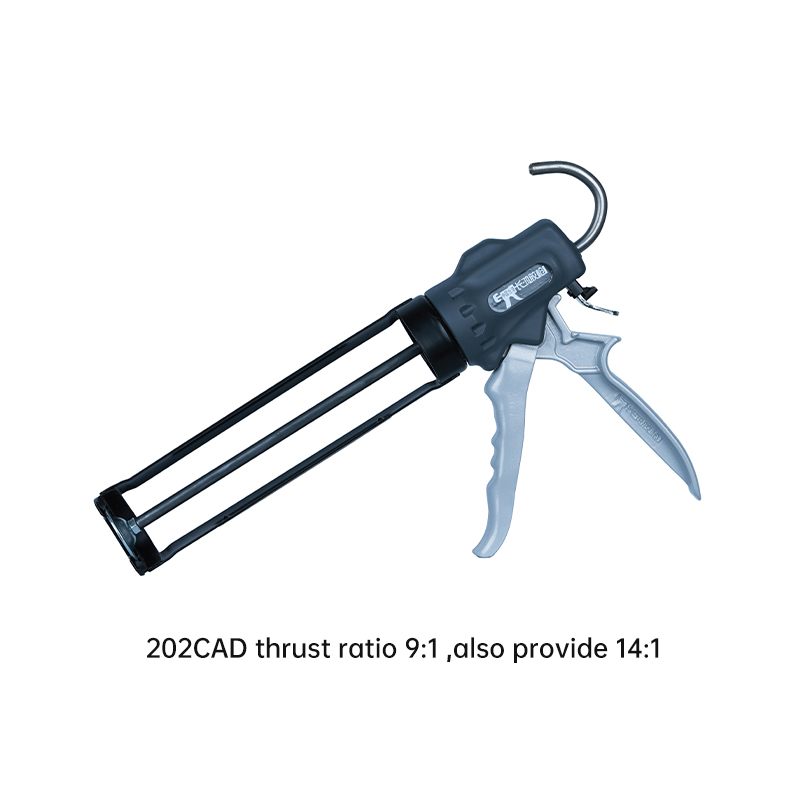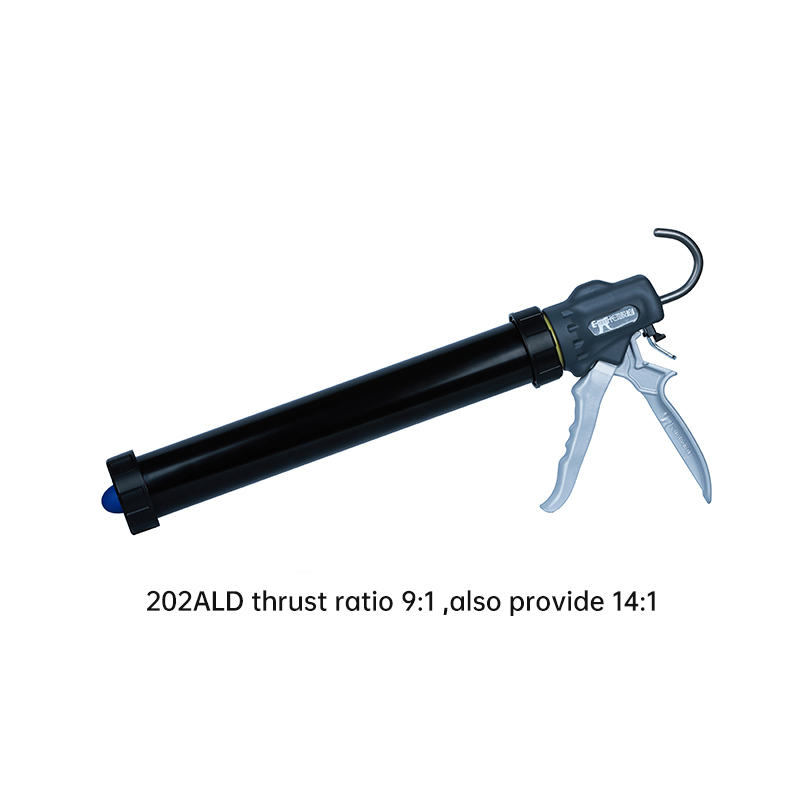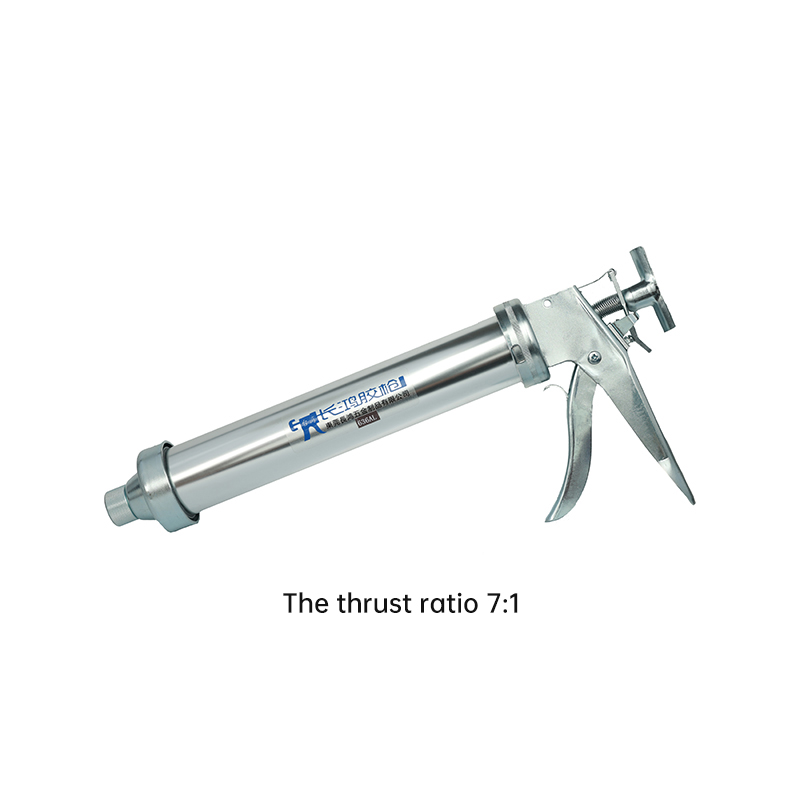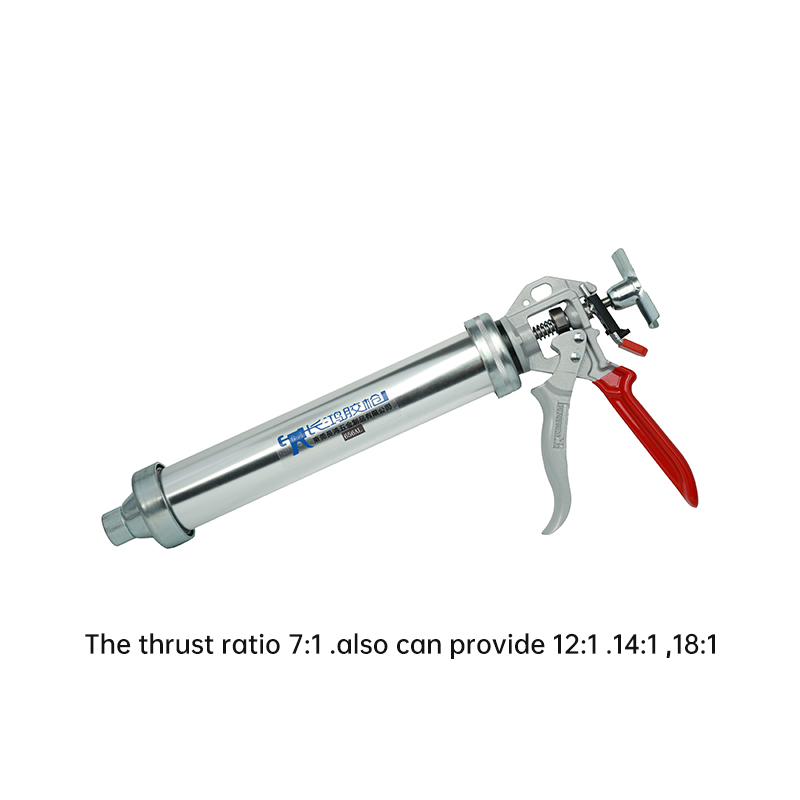How does the nozzle design of the ink cartridge sealing tool (caulking gun) prevent ink leakage?
Release Time : 2025-10-08
The nozzle design of a sealing tool (caulking gun) for ink cartridges requires comprehensive prevention of ink leaks through precise structure and innovative materials. Its core principles revolve around sealing, pressure balance, and operational compatibility. While traditional caulking gun nozzle design primarily focuses on building sealing applications, ink cartridge sealing must address specific requirements such as chemical corrosion from ink, filling tiny gaps, and dynamic pressure fluctuations. This requires breakthroughs in nozzle geometry, material selection, and functional integration.
Nipple contouring is fundamental to preventing ink leaks. The dimensions of the ink inlet and filling hole of an ink cartridge are typically controlled with millimeter-level precision. The nozzle requires a stepped structure or ribbed gasket to achieve precise fit within the interface. For example, some high-end designs employ a bionic octopus suction cup principle, where the nozzle edge deforms to fill tiny gaps and ensure even pressure distribution across the contact surface. This design not only accommodates the varying specifications of different ink cartridge brands but also maintains a stable seal during frequent insertion and removal, preventing the risk of leakage due to wear.
Material corrosion resistance is a key consideration in nozzle design. Ink is a complex composition containing chemicals such as solvents, dyes, and metal ions. Prolonged contact can cause swelling and embrittlement of ordinary rubber or plastic. Therefore, sealant tools (caulking guns) suitable for ink cartridges often utilize specialized materials such as EPDM (ethylene propylene diene monomer) or fluoroelastomer (FKM). The saturated bonds in their molecular structure resist chemical attack while maintaining elastic recovery. Some designs even incorporate liquid silicone rubber (LSR) injection molding to maintain tolerances within ±0.05mm, preventing seal failure caused by burrs or flash.
Dynamic pressure regulation is a core technology for preventing ink leaks. Temperature changes or pressure fluctuations can generate negative pressure inside ink cartridges, leading to ink backflow or overflow. To address this, the nozzle requires an integrated exhaust channel and a check valve structure. When the piston advances, the check valve closes to maintain pressure. When the pressure exceeds a threshold, the exhaust channel automatically opens to release gas, preventing ink leakage due to excessive pressure. For example, some designs use a microporous filter membrane to balance air pressure, preventing both dust intrusion and ink fluctuations caused by air backflow.
Anti-stick treatment technology further enhances sealing reliability. After drying, ink may form a sticky residue, which can clog the nozzle or cause the sealing surface to stick. To address this issue, some nozzles feature a micro-textured surface treatment to reduce contact area and reduce adhesion. Alternatively, they apply an ink-repellent coating, leveraging the inert properties of fluoride or polytetrafluoroethylene (PTFE) to facilitate the removal of dried ink. Additionally, a cleaning tool is available to assist in removing residue and extend the life of the nozzle.
Operation guides optimize the user experience. Cartridge installation requires precise seal alignment, with misalignment tolerances typically limited to 0.1mm. To this end, nozzles may incorporate integrated guides or snap-fit mechanisms to automatically align the cartridge when it is returned to its original position. Alternatively, spring-loaded positioning pins may be used for quick positioning, reducing the risk of leaks caused by operator error. For example, some designs incorporate a spring-loaded probe inside the nozzle. When the cartridge is inserted, the probe is compressed and retracts, triggering the sealing mechanism to ensure consistent operation every time.
Modular design enhances tool versatility. The ink refill port sizes vary significantly across different ink cartridge models, making traditional fixed nozzles difficult to adapt. Therefore, sealant tools (caulking guns) designed for ink cartridges may utilize interchangeable nozzle modules, allowing for quick assembly and disassembly to accommodate a variety of sizes. For example, some tools come with multiple nozzles corresponding to the cartridge interfaces of major brands like Canon and HP. Users can flexibly swap nozzles as needed, avoiding leaks caused by tool mismatch.
For long-term reliability, nozzle design also needs to consider fatigue resistance and aging resistance. With frequent use, nozzles can permanently deform due to repeated compression, leading to seal failure. To address this, some designs incorporate nano-ceramic particles to enhance rubber fatigue resistance or utilize customized thermoplastic elastomers (TPEs) instead of traditional materials to extend rebound life. Furthermore, the sealant tool (caulking gun) structure may incorporate humidity-regulating materials to prevent moisture absorption and evaporation of ink from affecting sealing performance, ensuring tool stability in complex environments.







